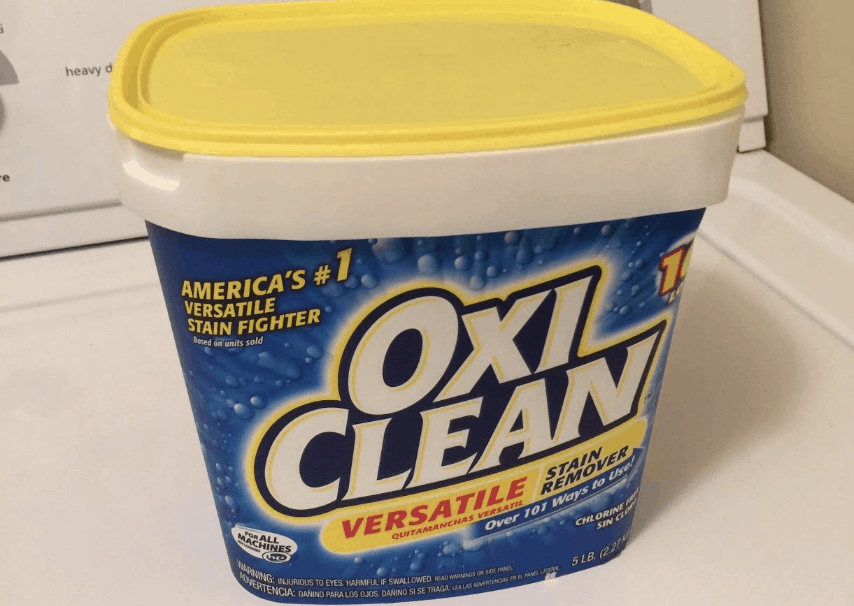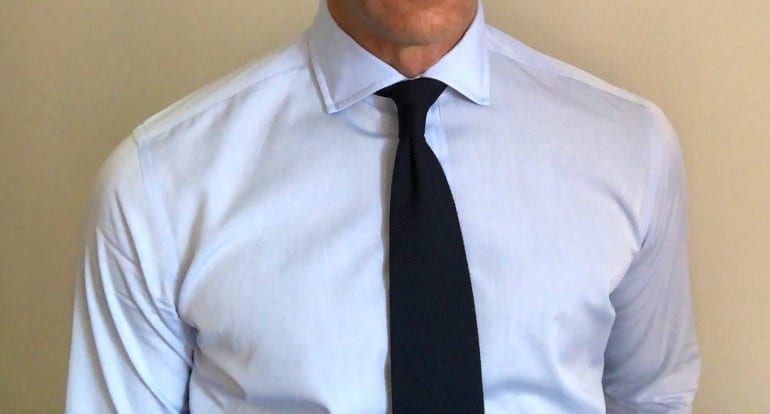Generation after generation, white shirts are still considered the epitome of elegance in a shirt. A clean, pressed white shirt is the choice men make for most formal events. It is worn under a suit for work, under a tuxedo at a wedding, and is chosen to wear at parties and large social events. The classical white shade is also immensely popular for normal, everyday wear, going with blue jeans perfectly. A man wearing a good quality white shirt at an informal social function will be noticed, even admired. It’s important that the bright white of a shirt stays bright. There is nothing less attractive than a faded, discolored white shirt. A key ingredient needed for keeping shirt primary white is non-chlorine bleach.
So, how do you bleach and whiten men’s dress shirts the right way? Good results from bleaching start with the manner in which white shirts are washed. Always use the amount of detergent that will clean clothes, and not more than necessary. Detergent acts to remove the dirt from clothes. Once the dirt is dispersed in the water, detergent works to prevent it from reappearing on the clothes. The steps listed here should be taken to get shirts that are clean and come out a bright white, looking like new.
Table of Contents
Steps to Take When Cleaning White Shirts Using a Washing Machine
- Turn the shirt inside out before placing it in the washing machine
This applies not only to t-shirts that are embossed or have writing on the front, but also to white men’s dress shirts. The outside of the dress shirt will be visible and you want to make sure that the least amount of abrasion comes into contact with the outside of the shirt and its pocket.
Wash White Men’s dress shirts separately from colors in a small load
Some clothes may be colorfast and will retain its color without dispersing it in the water. Still it’s best not to take chances. Besides, you will be bleaching the shirt as well as other white shirts. Keep them separate in a load dedicated to a white color.
Use non-chlorine bleach
Chlorine is a powerful chemical and can make shirts the brightest white. However, it’s not recommended for use on white men’s dress shirts if you’re using a washing machine. This is because too much bleach will cause the white to discolor and become yellow. Often chlorine is simply too powerful to be used on shirts that aren’t 100% cotton, and even on shirts that are made completely from cotton.
Bleach can be tricky and may work some of the time, but if there’s a mistake, it can yellow clothing items that are 100% cotton. It should definitely not be used on spandex, polyester or nylon.
Today there are non-chlorine beaches on the market like OxiClean that can do the job chlorine does but more safely.

Add Bluing for a sparkling white color
Bluing is a process where a small amount of blue dye is dispersed in the water. Yellowing occurs naturally in the washing process. Adding the blue pigment works against the yellowing process. The human eye perceives blue as white, so the end result is not a blue shirt, but rather a brighter white shirt. To whiten men’s dress shirts, bluing is critical and should be added in the wash along with detergent and non-chlorine bleach.
You can use a Bluing dye like Mrs. Stewarts Blue Dye. This is the most popular brand that I’d recommend.
Bluing is added very conservatively. Get to know the amount of water you are using in a wash of white clothes and add 1 teaspoon for every quart of water.
Do Not Over Wash White Dress Shirts
If you’ve ever gone to a batting cage to practice your hitting, you get into a cage and the pitching machine throws a finite amount of pitches for you to try and hit. When it runs out of baseballs, you pay again to hit more.
White men’s dress shirts have a finite amount of washes it can go through before the fabric begins to deteriorate and the color starts turning yellow. Each time you wash the dress shirt, you are coming closer to the last time.
White dress shirts do not have to be washed after wearing only one time. However, if you’ve perspired and sweat can be seen under the arms or across the chest, then it should be washed since perspiration will yellow the shirt under the armpits.
If you don’t perspire wearing it, save the wash for the next time you put it on. You should also avoid wearing white dress shirts for long periods of time. If you wear it for a special occasion that lasts only a couple of hours, change into a backup shirt. The longer you wear your white dress shirt, the more frequently you’ll have to wash it and the closer you get to not being able to wear it anymore.

Remember, when washing a shite dress shirt, use only a minimal amount of detergent. Avoid using the dryer, especially if you don’t need the shirt right away. Lastly, only wash white men’s dress shirts in warm water in the washing machine, not hot, because hot water intensifies the action of detergent and bleach in the water.
Believe it or not, bright sunshine is the best way to dry white men’s dress shirts after washing. Hang the shirts on a clothesline if you have one, or on a hanger outside where the sun can make contact. The UV rays of the sun will naturally brighten white shirts.
How Do I Remove Stains Under the Arms of White Dress Shirts?
Aluminum in antiperspirants cause white shirts to discolor quickly. When you wear white shirts, use deodorant instead of antiperspirants. If you perspire a lot during the day and need to wear antiperspirant instead, then buy thick cotton dress shirts and wear a white 100% cotton t-shirt underneath while still using deodorant.
The best way to avoid stains is to wash the shirt often when sweat comes into contact with it. Wear it only once or twice. Hot water should be used should sweat accumulate in the shirt’s armpits.
Is it a good Idea to Soak White Shirts by Hand?
One way to keep white shirts as bright and like new is to soak them by hand. You can use a bucket for washing only one white dress shirt at a time. Shirts will last longer by avoiding the agitating motion of a washing machine. Hand washing is a much gentler approach. Here you are avoiding both the washing machine and the dryer.
- Pre-soak your white dress shirt in the bucket of cold water and add bleach. The shirt should be submerged beneath a few inches of cold water.
- Add only 2 or 3 tablespoons of bleach to the water. Remember, it is best to soak only one shirt at a time.
- You can add borax, baking soda, and dishwashing liquid to the water. The agents in these ingredients will whiten the shirt.
- Stir the liquid in the bucket after adding the ingredients. Use a wooden spoon or some other stirrer that is not metallic.
- Let soak for no more than 15 minutes. Over soaking may cause fabric breakdown or discoloration.
- Take the shirt out and rinse it thoroughly in cold water under a running tap.
- Wring out the shirt and hang it up in the sunlight on a cord.
What Fabric Make Up the Best Men’s White Dress Shirts?
For the last 800 years, all over the world, the brightest white dress shirts have been made from 100% pure cotton. In some parts of the world where the climate is very hot, white shirts often include linen fabric to absorb perspiration.
The best white cotton men’s dress shirts come at a heftier price than shirts made from manmade fabrics like polyester. If you decide to spend more on a white shirt, go the extra mile and get a 2-ply cotton short for the warmer months, and 3-ply cotton for fall and winter.
The “ply” indicates how threads of dress shorts. 2-ply means two yarns have been twisted together, yielding a single thread. The more plies there are, the heavier the fabric will be, and the more durable it is.
Thread Count
Now, the more threads there are in the shirt, the better made it is and the longer it will be able to retain an appearance of newness. Buying 100% cotton is great, but if the thread count is low then it isn’t worth the extra expense. High end shirts have a threat count of up to 220 threads, compared to the average shirt whose thread count is about 100.

